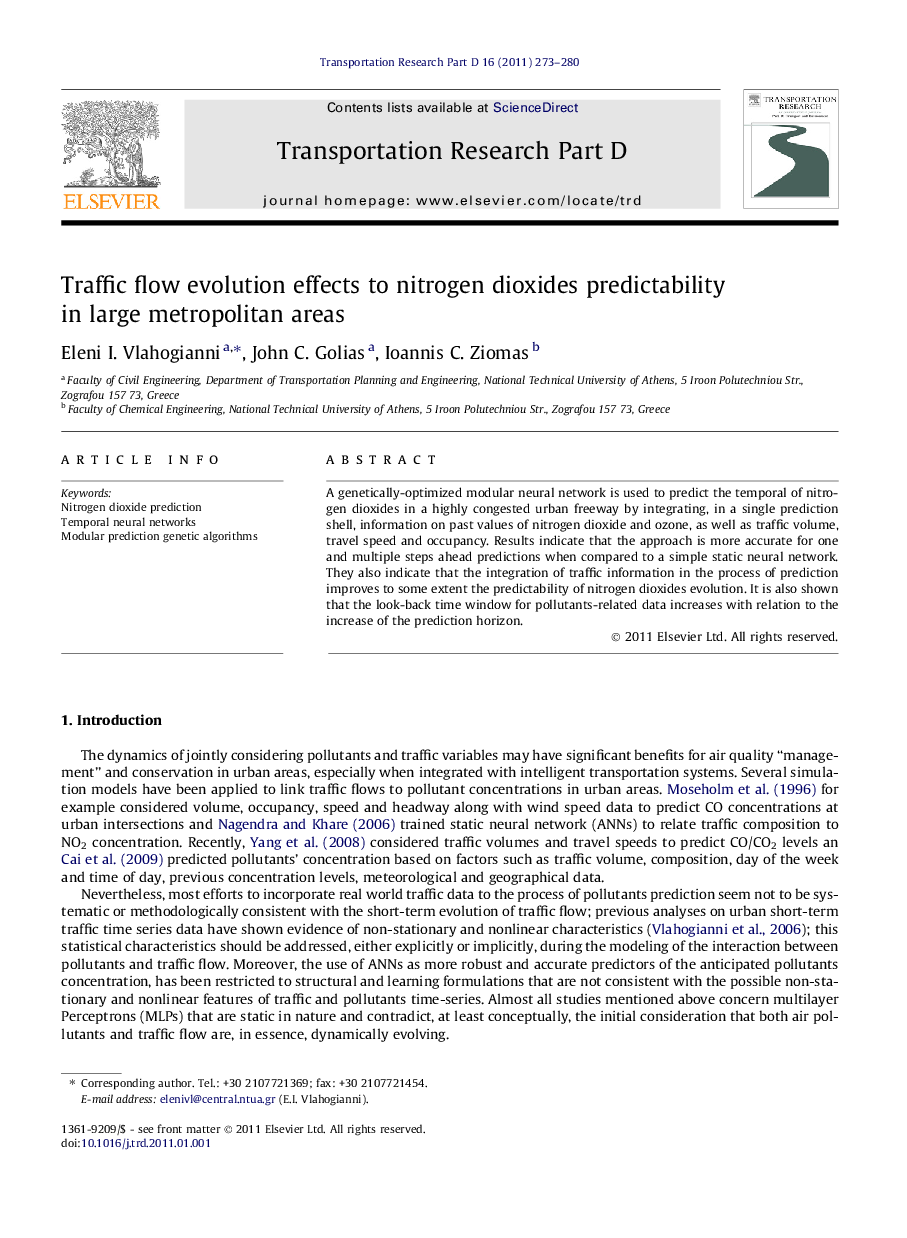| Article ID | Journal | Published Year | Pages | File Type |
|---|---|---|---|---|
| 1066189 | Transportation Research Part D: Transport and Environment | 2011 | 8 Pages |
A genetically-optimized modular neural network is used to predict the temporal of nitrogen dioxides in a highly congested urban freeway by integrating, in a single prediction shell, information on past values of nitrogen dioxide and ozone, as well as traffic volume, travel speed and occupancy. Results indicate that the approach is more accurate for one and multiple steps ahead predictions when compared to a simple static neural network. They also indicate that the integration of traffic information in the process of prediction improves to some extent the predictability of nitrogen dioxides evolution. It is also shown that the look-back time window for pollutants-related data increases with relation to the increase of the prediction horizon.
Research highlights► Nitrogen dioxide (NO2) concentrations in a congested urban freeway are predicted using a genetically optimized modular neural network. ► Information on traffic and ozone hourly evolution is taken into consideration. ► The integration of traffic information in the process of prediction improves on the predictability of NO2. ► The pollutants’ look-back time window for prediction increases with relation to the increase of the prediction horizon.
